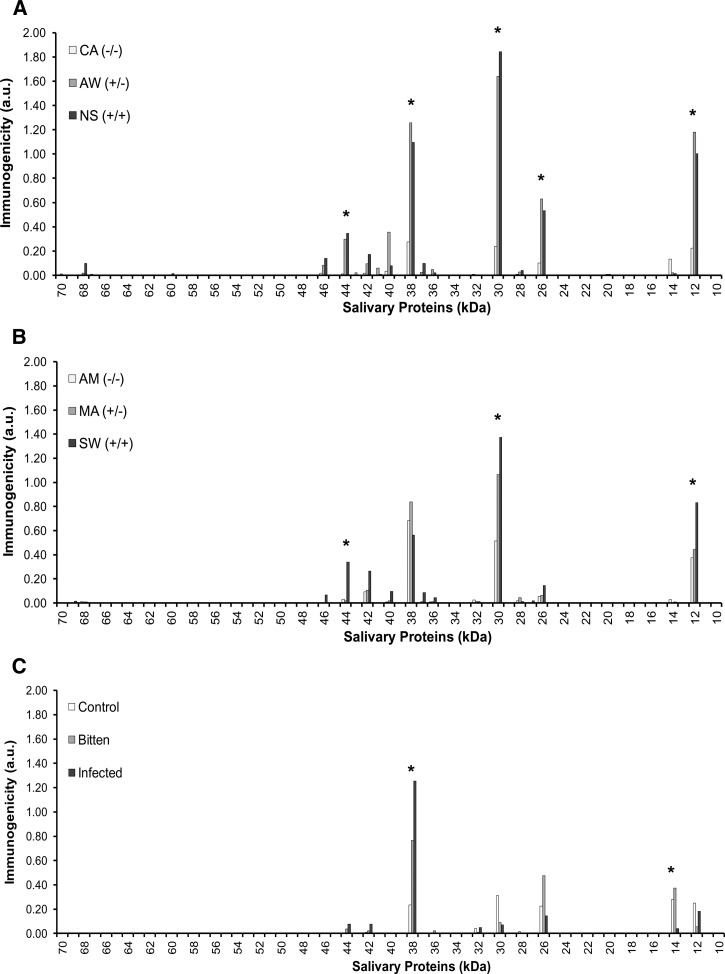Figure 2.
Immunogenicity to P. papatasi salivary gland proteins among plasma donors. (A) Immunogenicity of all P. papatasi salivary gland proteins by Egyptian blood plasma donor antibody specificities from three regions (CA, AW, and NS) using consensus estimates of MW on immunoblot images from three independent observers. (B) Immunogenicity of all P. papatasi salivary gland proteins by Jordanian blood plasma donor antibody specificities from three regions (AM, MA, and SW). Ecological conditions in the regional key are the same as those conditions outlined in Table 1. (C) Immunogenicity of all P. papatasi salivary gland proteins of Iraq-based US personnel and blood plasma donor antibody specificities from individuals differentially exposed to sand fly bites and Leishmania parasites. Exposure criteria are the same as those criteria outlined in Table 1. Immunogenicity is calculated as (probability of donor plasma antibody reaction of protein among a regional group) × (average of band intensity among that regional group) = a.u. *Significant difference(s) in host plasma antibody specificity for protein(s) at these MWs between sand fly-endemic and control regional sites or between sand fly bite-exposed military personnel and unexposed control donors (P ≤ 0.05).

